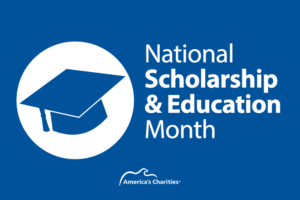Sarah Ford | March 6, 2014
Turning Employees into Sustainable Assets
Source: Charities@Work
What would profit and loss statements look like if they included factors like employee happiness, retention, job referrals and volunteerism?
In 1999, management guru Peter Drucker predicted the shift in the importance of a company’s most valuable resources.
“The most valuable assets of a 20th-century company was its production equipment,” Drucker wrote. “The most valuable asset of a 21st-century institution, whether business or non-business, will be its knowledge workers and their productivity.”
Drucker’s theory might have been aimed at accountants and investors, but I believe that it applies as effectively to a corporation’s human resources department as well as its volunteer program managers, community relations officers and workplace giving executives.
At EarthShare we take pride in working with our partner companies on prioritizing employee happiness and satisfaction. We reach them through creative volunteerism opportunities and innovative ways to keep them informed and educated about the causes and issues that touch them most closely.
Here’s what we’ve learned about how volunteer programs can boost the bottom line.
Connecting Volunteerism with the Balance Sheet
The success of a corporate volunteer program is typically measured through the number of hours contributed, the number of participants, how many nonprofit organizations benefited and the amount of money raised.
In essence, though, companies are measuring how many employees the program appealed to and how those employees chose to participate. Most importantly, they’re also trying to assess whether the importance of community engagement is resonating with its employees as well as the impact of the program.
It’s basically about quantifying success. A company can declare a volunteer program a success, for example, if employees were able to raise a certain amount of money to assist nonprofits in the Amazon or contribute a certain amount of time to plant trees, build playgrounds or rehabilitate a decimated forest. This makes the program an asset to the impacted community, as well as the company. For the company, it helps enhance its reputation, brand recognition and employee satisfaction.
Get Resources and Insights Straight To Your Inbox
Explore More Articles
Open Position: Customer Service Coordinator (Remote-Part Time)
Position Title: Customer Service Coordinator (Remote – Part Time) Department: Charitable Funds Management Solutions We are a non-profit charitable organization looking for skilled individuals who…
Read ArticleGet Resources and Insights Straight To Your Inbox
Receive our monthly/bi-monthly newsletter filled with information about causes, nonprofit impact, and topics important for corporate social responsibility and employee engagement professionals, including disaster response, workplace giving, matching gifts, employee assistance funds, volunteering, scholarship award program management, grantmaking, and other philanthropic initiatives.




